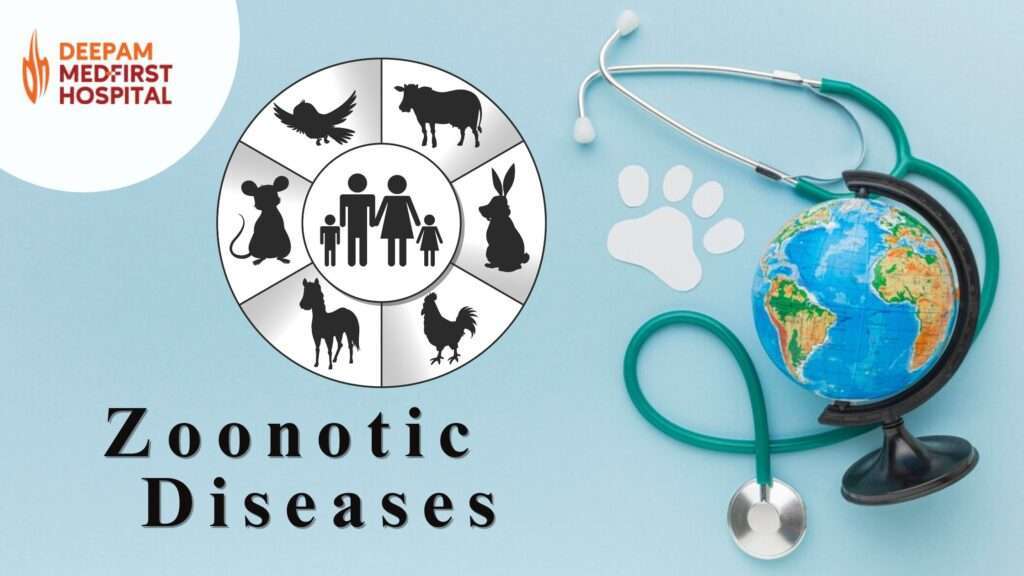Introduction
Zoonotic diseases are infections that can be transmitted between animals and humans. They range from bacteria, viruses, to parasites, posing significant public health challenges due to their potential for rapid spread and impact on both animal and human populations. Understanding and managing these diseases are critical for safeguarding public health worldwide.
What Are Zoonoses?
Zoonoses are caused by pathogens such as viruses, bacteria, parasites, and fungi that can jump from animals to humans. These pathogens can be transmitted through various routes, including direct contact with animals, consumption of contaminated food or water, and vector-borne transmission through insects like mosquitoes and ticks.
Common Zoonotic Diseases
Rabies
A viral disease that is almost always fatal once symptoms appear. It is primarily spread through the bite of an infected animal, commonly dogs, bats, and wild carnivores.
Lyme Disease
Caused by the bacterium Borrelia burgdorferi, it is transmitted to humans through the bite of infected black-legged ticks. Symptoms include fever, headache, fatigue, and a characteristic skin rash.
Avian Influenza
Also known as bird flu, this viral infection primarily affects birds but can infect humans who have close contact with infected poultry. Some strains, such as H5N1, can be severe and fatal in humans.
Salmonellosis
Caused by bacteria of the genus Salmonella, it is usually contracted by consuming contaminated food, particularly undercooked poultry, eggs, and dairy products. It can also be spread through contact with infected animals, especially reptiles and birds.
Ebola
A severe viral disease that causes hemorrhagic fever. It is transmitted to humans from wild animals and spreads through human-to-human transmission via body fluids.
How Zoonotic Diseases Spread
Direct Contact
Handling or coming into close contact with the blood, saliva, or other bodily fluids of an infected animal.
Foodborne Transmission
Consuming meat, dairy products, or other food items contaminated with pathogens from infected animals.
Vector-Borne Transmission
Being bitten by an insect, such as a mosquito or tick, that carries the pathogen from an animal host to a human.
Indirect Contact
Encountering environments contaminated with pathogens, such as farms, slaughterhouses, or surfaces where infected animals have been present.
Prevention and Control
Hygiene and Sanitation
Proper handwashing, cooking food thoroughly, and maintaining clean living environments can reduce the risk of zoonotic disease transmission.
Vaccination
Vaccinating animals against certain zoonotic diseases, such as rabies, helps prevent the spread of these diseases to humans.
Vector Control
Using insect repellents, bed nets, and other measures to control vectors like mosquitoes and ticks can reduce the risk of vector-borne zoonoses.
Public Awareness
Educating communities about the risks and prevention of zoonotic diseases is essential for controlling their spread.
One Health Approach
This approach emphasizes the interconnectedness of human, animal, and environmental health. Collaborative efforts among veterinarians, medical professionals, and environmental scientists are crucial for effective zoonotic disease management.
Conclusion
Zoonotic diseases pose a significant threat to global health, requiring concerted efforts for prevention and control. By understanding the transmission routes and implementing effective measures, we can mitigate the impact of zoonoses and protect both human and animal health. Public awareness and collaboration across sectors are key to addressing these complex health challenges.

